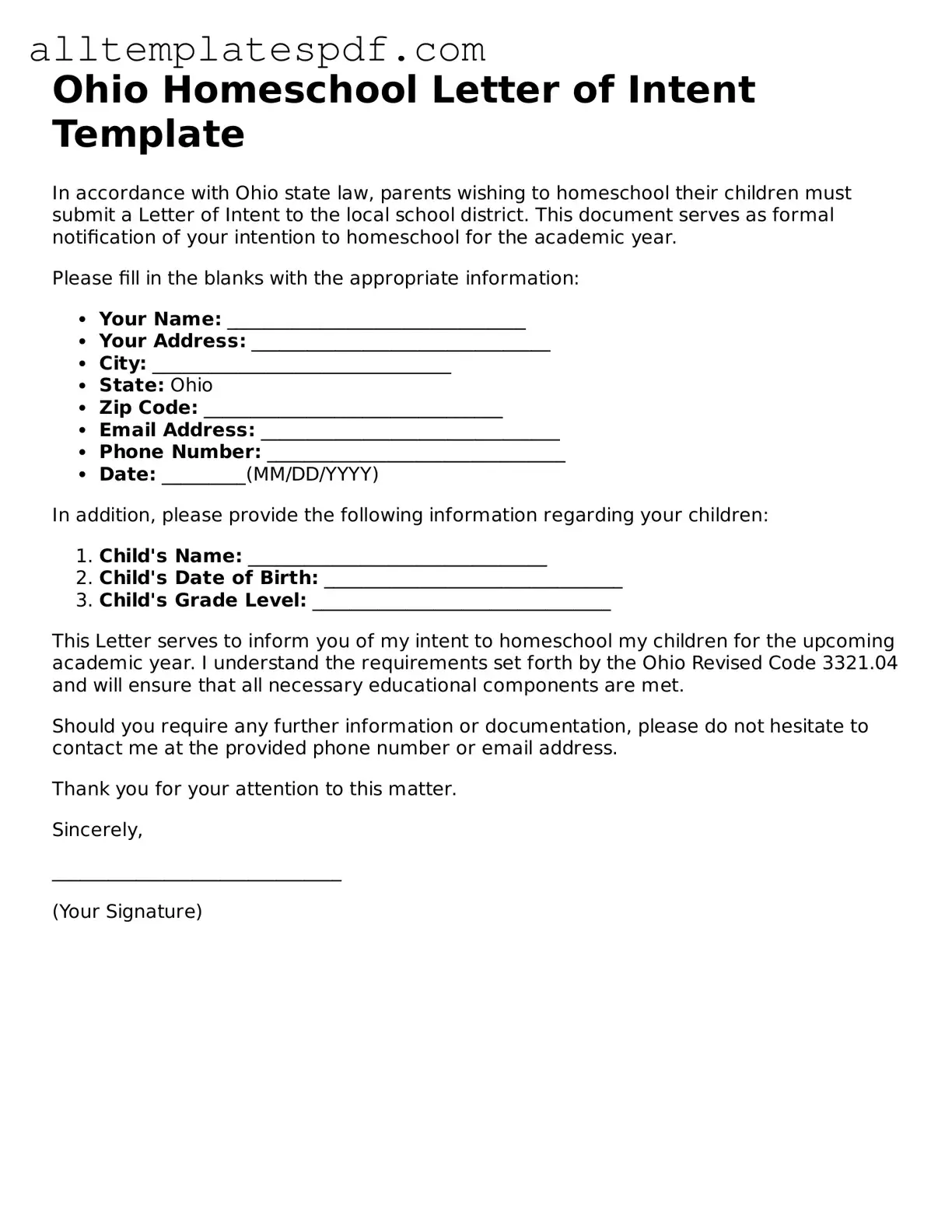Filling out the Ohio Homeschool Letter of Intent form can be a straightforward process, but many families encounter common pitfalls. One frequent mistake is failing to include all required information. The form asks for specific details about the child, such as their full name and date of birth. Omitting any of this information can lead to delays or complications.
Another common error is not providing the correct address. It is essential to ensure that the address listed is accurate and current. An incorrect address can lead to issues with correspondence from the school district, which may result in misunderstandings about homeschooling requirements.
Some parents overlook the importance of signing the form. A signature is not just a formality; it signifies that the parent or guardian is committed to overseeing the child's education. Without a signature, the form is incomplete and cannot be processed.
Additionally, many individuals fail to submit the form within the required timeframe. Ohio law mandates that the Letter of Intent must be submitted at least 14 days before the start of the school year. Missing this deadline can lead to a delay in starting homeschooling.
Another mistake involves not keeping a copy of the submitted form. It is crucial to retain a copy for personal records. This can be helpful in case there are questions or issues later on regarding the homeschooling status of the child.
Some parents misunderstand the need to update the form if there are any changes. If a family moves or if there is a change in the child's educational plan, an updated Letter of Intent must be submitted. Failing to do so can create confusion with the school district.
Another area of concern is not following the specific instructions provided on the form. Each section is designed to gather particular information. Ignoring these instructions can lead to incomplete submissions, which may require additional follow-up.
Lastly, many individuals do not take the time to review the form before submitting it. A careful review can catch simple mistakes, such as typos or missing information. Taking a moment to double-check the form can save time and prevent issues down the line.
